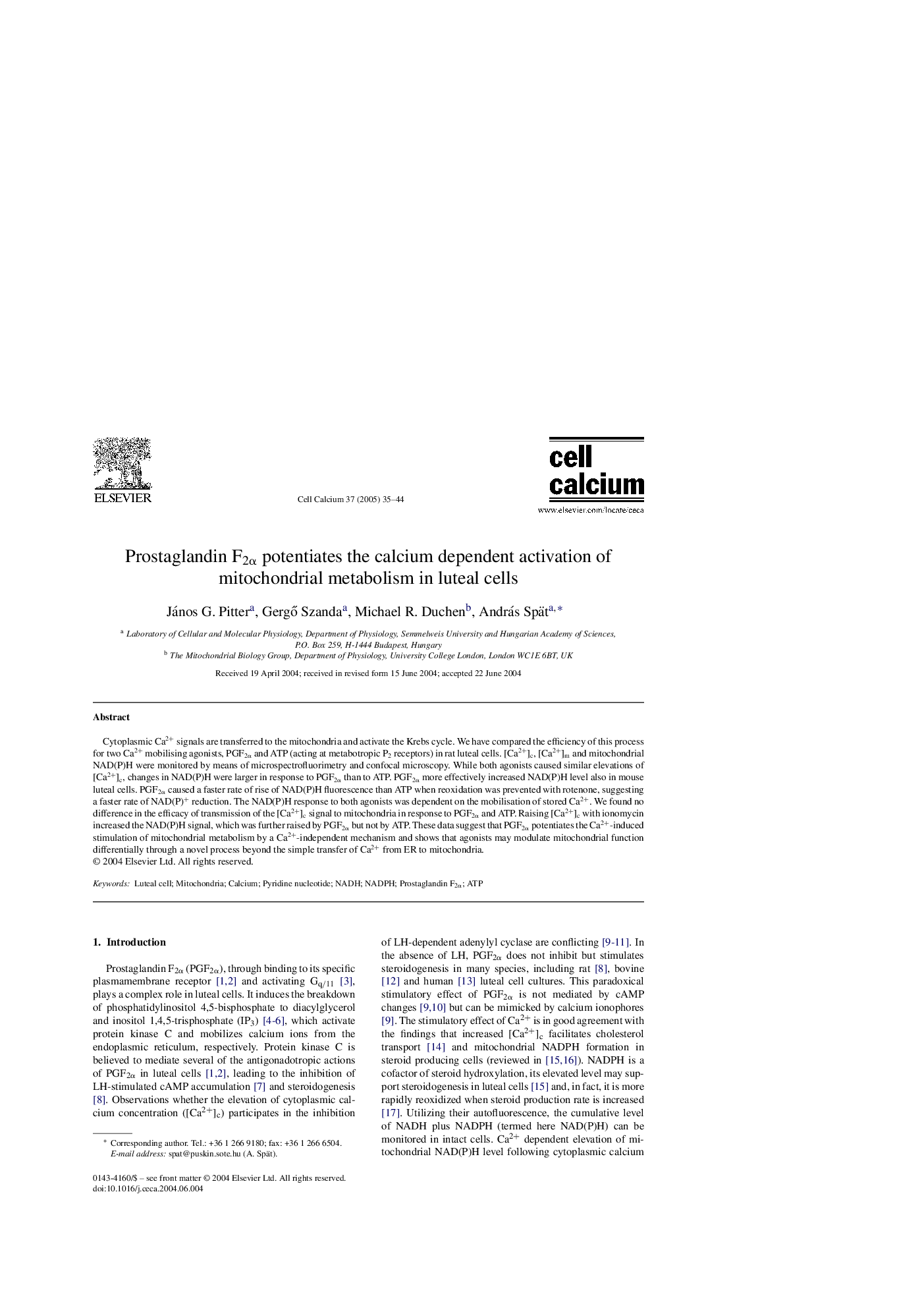| Article ID | Journal | Published Year | Pages | File Type |
|---|---|---|---|---|
| 10926525 | Cell Calcium | 2005 | 10 Pages |
Abstract
Cytoplasmic Ca2+ signals are transferred to the mitochondria and activate the Krebs cycle. We have compared the efficiency of this process for two Ca2+ mobilising agonists, PGF2α and ATP (acting at metabotropic P2 receptors) in rat luteal cells. [Ca2+]c, [Ca2+]m and mitochondrial NAD(P)H were monitored by means of microspectrofluorimetry and confocal microscopy. While both agonists caused similar elevations of [Ca2+]c, changes in NAD(P)H were larger in response to PGF2α than to ATP. PGF2α more effectively increased NAD(P)H level also in mouse luteal cells. PGF2α caused a faster rate of rise of NAD(P)H fluorescence than ATP when reoxidation was prevented with rotenone, suggesting a faster rate of NAD(P)+ reduction. The NAD(P)H response to both agonists was dependent on the mobilisation of stored Ca2+. We found no difference in the efficacy of transmission of the [Ca2+]c signal to mitochondria in response to PGF2α and ATP. Raising [Ca2+]c with ionomycin increased the NAD(P)H signal, which was further raised by PGF2α but not by ATP. These data suggest that PGF2α potentiates the Ca2+-induced stimulation of mitochondrial metabolism by a Ca2+-independent mechanism and shows that agonists may modulate mitochondrial function differentially through a novel process beyond the simple transfer of Ca2+ from ER to mitochondria.
Related Topics
Life Sciences
Biochemistry, Genetics and Molecular Biology
Cell Biology
Authors
János G. Pitter, GergÅ Szanda, Michael R. Duchen, András Spät,
